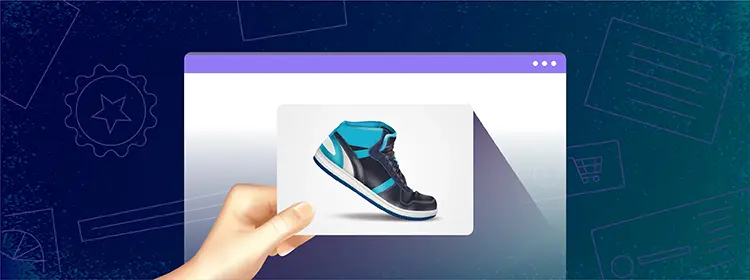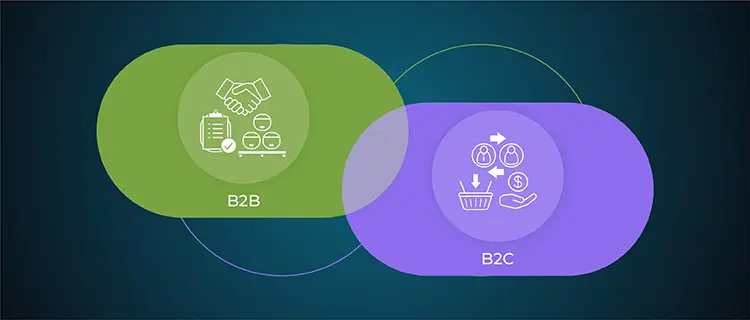

In recent years, the eCommerce industry in India has grown at an exponential rate, despite certain setbacks. It is expected to be 22% by the year 2023 (source: ecommerceguide.com ) and continues to be the hottest trend. It is more appealing to young Indian entrepreneurs and retailers because of its ease of handling and systematic structure.
Web developers find this a rich and attractive industry. Many eCommerce websites are being launched daily. This article will provide straightforward yet fundamental procedures involved in the eCommerce website development process.

Know what you want to sell. This can be a simple thing that should interest you and also the market needs it too. Product and market research is necessary as this will make you aware of the fact that people need what you are intending to sell.
You must be aware of the trends and popular marketplace items you are about to enter. An eCommerce website operates smoothly if the right products are displayed and the obsolete data is removed.
Moreover, you will be competing with many other businesses that offer the same type of products or services as yours. Entering the market with a unique approach and distinctive branding will help you succeed.

There are many options for eCommerce business models. The two most common are business-to-business (B2B) and business-to-consumer (B2C). It's necessary to understand where your eCommerce fits.
Most of the eCommerce websites we encounter are B2C. On such websites, products or services are directly sold by the company to the general public, which means no third parties are involved. The most common example is Amazon.
In B2B, Businesses sell to other businesses which take care of selling the products or services further to the consumer.
You must know who your potential customers are. Knowing this will help you to reach the right purchaser easily and save your time and money. When you have data like, ages, location, and occupation of the target audience, you can easily run personalized ad campaigns.

Ecommerce allows you to offer your products or services to a larger audience. This could be used as an advantage and employed to increase profits.
Naming your product/company is very important as it builds an impression in people’s minds. A unique and creative name will make you stand out from the crowd. You must avoid cliches and try to personalize the name in such a way that it is memorable.
Make sure that it is short and has not more than two words. A boring name might create a bad impression and affect the business. Once you have decided on your company name, you must register the domain name.
The next thing you must do is design and create attractive branding. A distinctive logo, standard colours, appealing fonts, and adding emotions to your products will help an eCommerce website to be successful.

Your target audience must understand the purpose of your brand. They must understand your vision and motivation. Personalizing your brand establishes credibility. For an eCommerce website to be successful, business and the consumer must be bound by some emotion.

When it comes to eCommerce systems, you may use Magento, Shopify, or a plugin like WooCommerce with WordPress to manage your eCommerce website. You can also go with a fully custom eCommerce website. There are some limitations and advantages of each platform that you may be considering.
The eCommerce platform you choose to power your website should have a responsive design and provide the best user experience. It should be consistent, whether accessed on PC, mobile, or other devices.

Integrate with trusted payment gateways like Razorpay, PayU, PayTM, CCAvenue for in-app direct payment.
Cash on delivery:
NetBanking
Digital Wallets
Credit/Debit Card
UPI
and crypto payment to be actually futuristic
Your content must be relevant in order to receive organic traffic. The keywords in your content will guide when the customer is surfing the internet. SEO assists in increasing your reachability. It helps you reach your target audience right. Internet is an ocean of everything, literally. But the thing is to find your kind of fish in the ocean.
You must use vocabulary that is in regular use when discussing the category of products you sell. You can use Google Keyword Planner and Google Trends to conduct keyword research. Headers, titles, and descriptions must contain relevant words and phrases. Never stuff your material with too many keywords such that it will degrade the readability of your content. There is a lot you can do to ensure that your website reaches more people.

Most people can take good shots of the products themselves by using a quality camera and some expertise. Ensure proper setup and lighting. However, if you have funds, you can employ a professional high-quality photographer to capture the best looks of your product.
You must ensure that the photos are focusing more on your products and have balanced colours. Later, you can enhance the photos using editing skills and make them more attractive for a better representation of your products.
A product description is the most crucial factor which influences the sales of an eCommerce website. It provides the customers with all the information they need about the product. It is essential that you make provide all the details required for the customer to make a decision.
An incomplete description will confuse the customer and he might hesitate to make a purchase. Attributes, as well as the benefits of using the products, must be mentioned. Specifications and features of the product must not be totally factual. There should be a realistic emotion connected with every detail you give in the product description.
Finally, the most crucial step is appropriate shipping software for the product. It is important as it defines how you treat your customers. Easy and quick shippings are likely to attract more sales. Moreover, in the case of returns, the process must seem simple for the customers otherwise they think twice before buying. This is simply because due to any technical reasons if a wrong or defective product gets shipped then the customer will be stuck with it forever.

Tracking the shipment and providing an estimated delivery date will guide the customer and keep them informed of the progress. Hence, it is of extreme importance that suitable shipping service is selected with new and updated features as above.
Creating an eCommerce Website is easy if you go through the steps mentioned above and follow a systematic path. Obviously, eCommerce will boost your business and take it to another level if you start now. The most important point is that once you create your online store, you must make sure that you update the inventory regularly. Your customers will be happier if your website is up to date and is easy to reach and explore.
